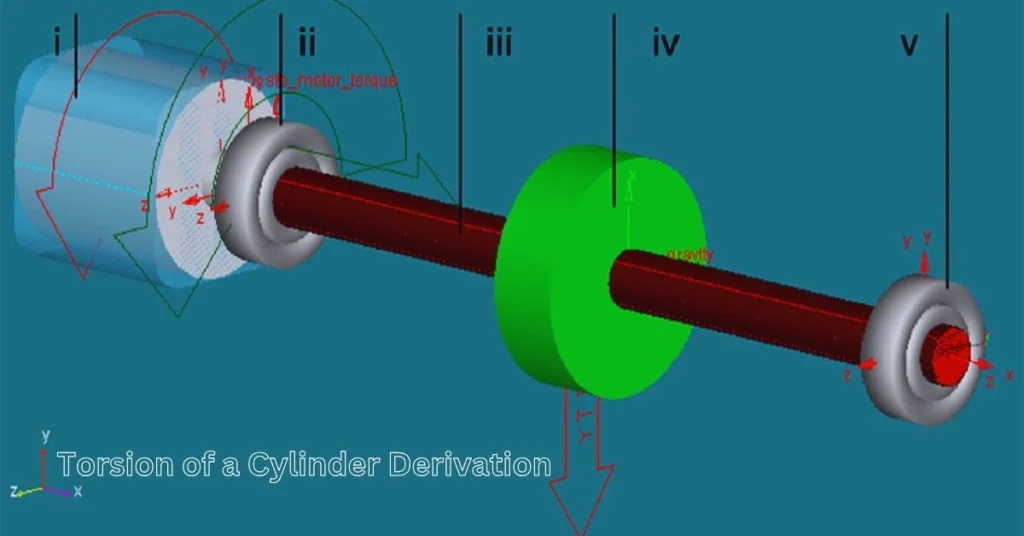Introduction to Torsion of a Cylinder
Have you ever wondered how engineers ensure that structures remain stable under twisting forces? Torsion of a Cylinder Derivation is a fundamental concept in physics and engineering, especially when it comes to understanding the behavior of cylinders. Whether it’s the sturdy columns of a skyscraper or the delicate components within machinery, torsion plays a crucial role in maintaining integrity. In this blog post, we will dive into the derivation of torsion in cylinders, unraveling its complexities while making it easy to grasp. Get ready to explore essential concepts that bridge theory and practical applications!
Basic Concepts and Terminology
Torsion refers to the twisting of an object due to applied torque. It’s essential in understanding how materials behave under rotational forces.
In a cylinder, two critical concepts come into play: shear stress and angle of twist. Shear stress is the force per unit area that causes layers within the material to slide past each other. The angle of twist measures how much a cylinder rotates when subjected to torque.
Another important term is polar moment of inertia. This property reflects how mass is distributed about an axis and influences a cylinder’s resistance to torsion.
Understanding these basic terms sets the stage for exploring deeper concepts related to torsional behavior. Each plays a vital role in predicting how cylindrical objects respond when twisted, which is crucial in engineering applications.
Deriving the Torsion Formula
To derive the torsion formula, we start by considering a cylindrical shaft subjected to twisting. The key is to understand how shear stress develops within the material when it experiences this applied torque.
When a torque \(T\) is applied, it creates an angle of twist \(\theta\) along the length \(L\) of the cylinder. This relationship links angular displacement with mechanical properties.
Next, we introduce polar moment of inertia \(J\). It quantifies how the area distribution in a cross-section resists torsional deformation. Calculating \(J\) for circular sections reveals its importance in determining torsional rigidity.
From these concepts, we arrive at the fundamental relationship:
\[
\tau = \frac{T \cdot r}{J}
\]
Here, \(\tau\) represents shear stress and \(r\) stands for radial distance from the center axis. This equation encapsulates how materials respond under torsion and forms the backbone of our analysis.
Understanding Stress and Strain in Torsion
Stress and strain are fundamental concepts in understanding torsion. When a cylindrical object twists, internal forces generate stress throughout its material.
Shear stress occurs when these forces act parallel to the surface. This stress can be calculated using the formula τ = T*r/J, where τ is shear stress, T is the applied torque, r is the distance from the center axis, and J is the polar moment of inertia.
Strain describes how materials deform under stress. In torsion, this deformation results in angular displacement. The relationship between shear strain (γ) and torque helps predict how much a cylinder will twist under specific loads.
Materials respond differently based on their properties—some may yield while others remain elastic. Understanding these interactions ensures engineers design safe structures that withstand operational demands without excessive twisting or failure.
Applications of Torsion in Engineering and Science
Torsion plays a critical role in various engineering applications. It’s vital for designing shafts and beams that need to transmit torque effectively. Engineers analyze torsional stress to ensure these components can withstand twisting forces without failure.
In the automotive industry, driveshafts are prime examples. They must endure significant rotational loads while maintaining structural integrity. Understanding torsion helps manufacturers create safer, more reliable vehicles.
Aerospace engineering also relies heavily on torsion principles. Aircraft wings experience twisting during flight, impacting their performance and stability. By applying torsion analysis, engineers enhance designs for optimal aerodynamics and safety.
Beyond mechanical structures, torsion is crucial in materials science as well. Researchers study how different materials respond to twisting forces, which leads to innovations in stronger composites and alloys.
This understanding extends into civil engineering too—think of bridges where cables undergo significant torsional stresses under load conditions. Each application underscores the importance of mastering this concept across disciplines.
Real-World Examples of Torsion
Torsion appears in everyday life, often without us even realizing it. Think about the simple act of twisting a bottle cap. As you apply force to turn it, the cap experiences torsional stress.
In engineering, shafts in machinery are prime examples. These components endure torsional loads during operation, transmitting power efficiently while withstanding twisting forces.
Another striking example is found in bridges. Suspension cables experience torsion when loads shift or during high winds. Engineers must account for these stresses to ensure structural integrity and safety.
Even our own bodies experience torsion! When we twist while playing sports, our muscles and joints adapt to these forces. Understanding this physical phenomenon helps in injury prevention and performance enhancement.
From household items to massive structures, the effects of torsion are everywhere—shaping how things work and ensuring they function properly under various conditions.
Conclusion: Importance of Understanding Torsion in Engineering and Daily Life
Understanding the torsion of a cylinder is essential for both engineering applications and everyday life. Torsion plays a critical role in the design and functionality of various structures, from bridges to machinery. Engineers must account for torsional forces to ensure safety and efficiency.
In daily activities, we encounter torsion frequently—think about twisting open a jar or using tools like wrenches. Recognizing how these actions relate to physical principles can enhance our appreciation of mechanics in action.
As technology continues to advance, knowledge of torsional dynamics will remain vital across multiple fields. Whether it’s developing new materials that can withstand stress or improving existing designs, understanding this concept paves the way for innovation and practical solutions.
Mastering the physics behind torsion not only enhances technical skills but also fosters deeper insights into how things work around us. Embracing this knowledge contributes to safer practices in engineering while enriching our comprehension of physical interactions in daily tasks.
Explore the specs and features of the Terrasport LT Trailer in our in-depth review.

